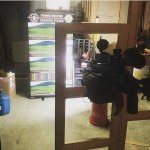I'm really curious how many of you guys go about practicing for PRS competition.
I was speaking with a few of the top shooters at my last match and was told by one of them he shoots around 8,000 rounds a year in practice and another guy said he was well over double that. Well that's just great if you're rich but for the rest of us, we need a more affordable solution.
Myself, I have a variety of methods, each to focus on specific needs.
The first is motor skills. I have a 4x4 practice cactus in the basement and I shoot from 10 yards with a pretty good repeating PCP pellet rifle that closely replicates PRS style setup. The goal here is to develop stable shooting positions, work on transitions, speed and dialing the scope to simulate windage and elevation calls. I have graph paper targets where I always aim at one place but must dial the scope to hit elsewhere on the target to simulate long range shots.
The second goal is ballistic calibration. I do this from a bench with both 22LR and center fire. I start every practice day here and confirm that my muzzle velocity changes are tracking with temperature changes as well as ballistic drop data in my Garmin 701.
Third is firing from made up PRS style obstacles at close range, like no further than 200 yards. I do this at close range so I can eliminate wind call errors and focus on position and timing work. I don't want a wind call to distract from my position work and shooting.
The fourth stage is doing it like a match out to longer distances. Here I have to make wind calls and make sure ballistic data is right.
So... How do you guys do it?
Do you have any sort of structured approach to PRS practice?
I was speaking with a few of the top shooters at my last match and was told by one of them he shoots around 8,000 rounds a year in practice and another guy said he was well over double that. Well that's just great if you're rich but for the rest of us, we need a more affordable solution.
Myself, I have a variety of methods, each to focus on specific needs.
The first is motor skills. I have a 4x4 practice cactus in the basement and I shoot from 10 yards with a pretty good repeating PCP pellet rifle that closely replicates PRS style setup. The goal here is to develop stable shooting positions, work on transitions, speed and dialing the scope to simulate windage and elevation calls. I have graph paper targets where I always aim at one place but must dial the scope to hit elsewhere on the target to simulate long range shots.
The second goal is ballistic calibration. I do this from a bench with both 22LR and center fire. I start every practice day here and confirm that my muzzle velocity changes are tracking with temperature changes as well as ballistic drop data in my Garmin 701.
Third is firing from made up PRS style obstacles at close range, like no further than 200 yards. I do this at close range so I can eliminate wind call errors and focus on position and timing work. I don't want a wind call to distract from my position work and shooting.
The fourth stage is doing it like a match out to longer distances. Here I have to make wind calls and make sure ballistic data is right.
So... How do you guys do it?
Do you have any sort of structured approach to PRS practice?
Last edited:



